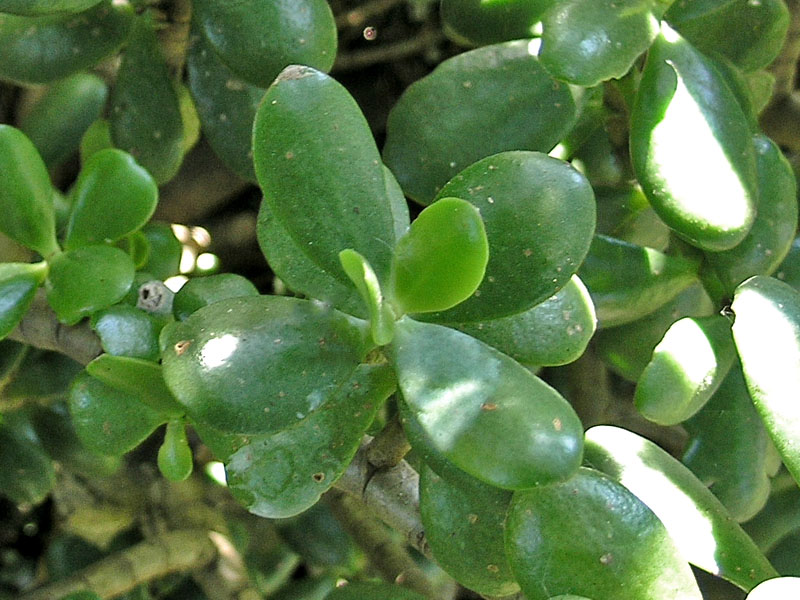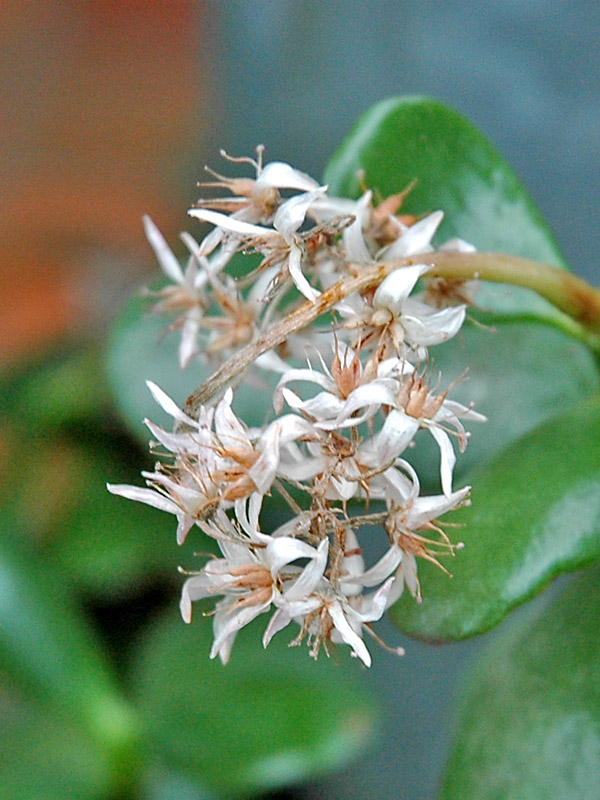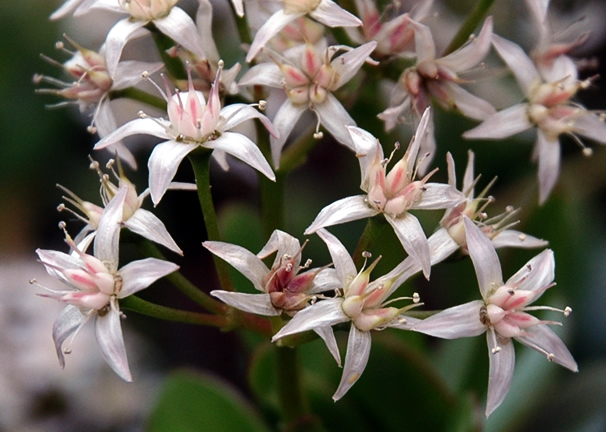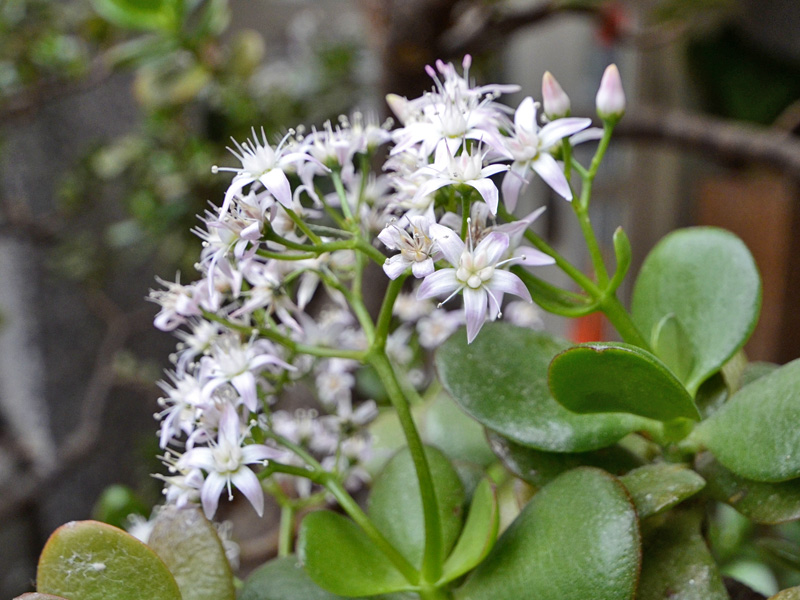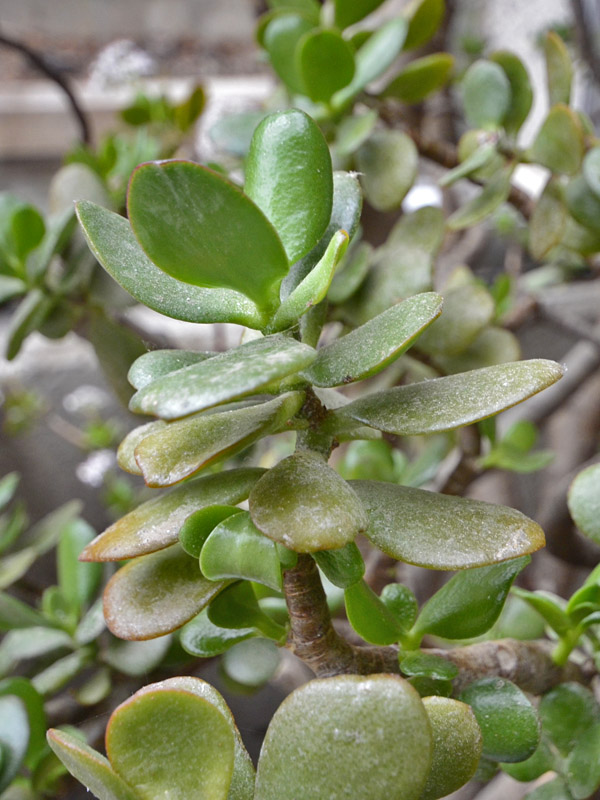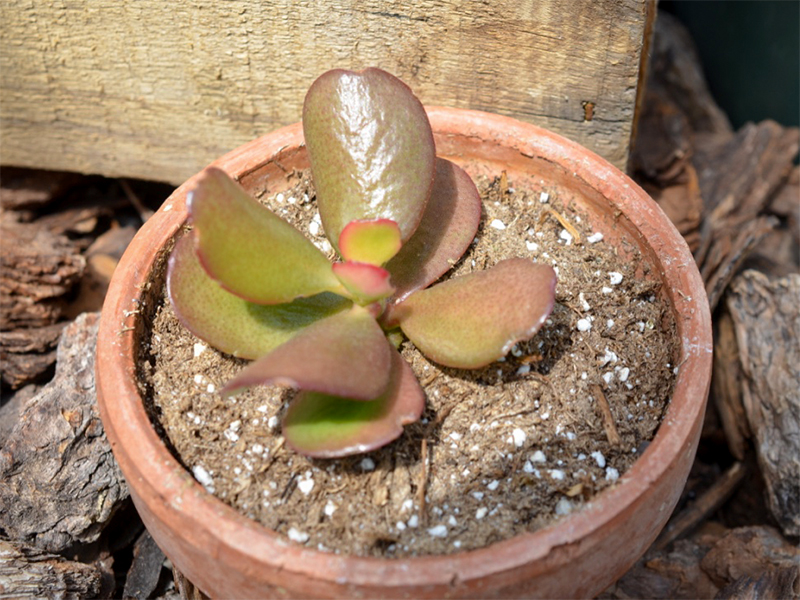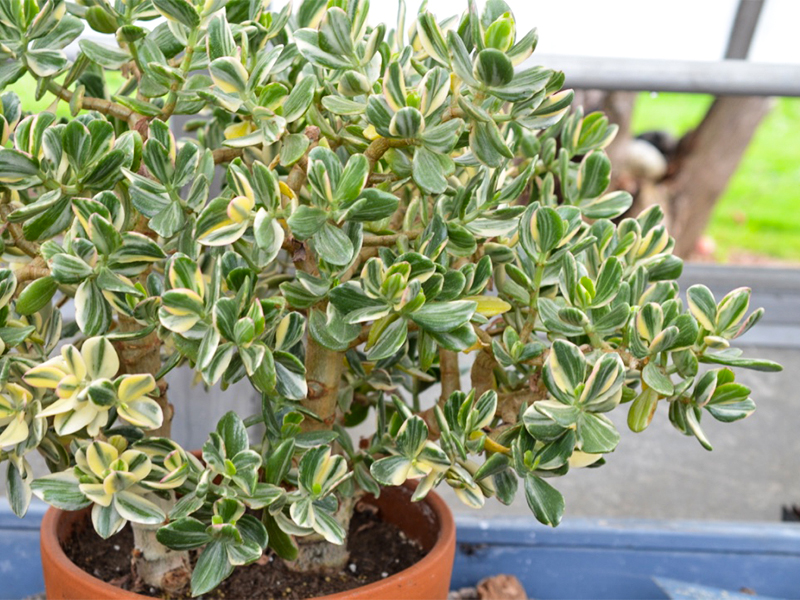
Tropicals > Crassula > Crassula argentea > Crassula argentea
Crassula argentea
Jade Plant
Origin: Native to South Africa.
| Family |
| Crassulaceae |
| Genus |
| Crassula |
| Species |
| argentea |
| Category |
| Tropicals |
| Type |
| Shrub (evergreen) |
| Synonyms |
| Crassula ovata |
| Pronunciation |
| USDA Hardiness Zone |
| 9 - 11 |
| Canadian Hardiness Zone |
| Requires cool season protection under glass. |
| RHS Hardiness Zone |
| H3 - H1b |
| Temperature (°C) |
| 5 |
| Temperature (°F) |
| 15 |
| Height |
| 0.8 - 1.4 m |
| Spread |
| 0.8 - 1 m |
Photographs
Description and Growing Information
Flowering Period
| General Description |
| An easy to grow tropical and very popular houseplant. |
| Landscape |
| Rock gardens, succulent collections, potted indoor plant, potted outdoor plant, container plant or as a specimen. |
| Cultivation |
| Plant in loose, well-draining loamy to sandy soil. Provide plenty of light and turn the plant frequently for even exposure. |
| Shape |
| Upright rounded crown. |
| Growth |
| Medium |
| Pests |
| Red spider mites and aphids may be a problem. |
| Habitat |
| Dry loamy plains and sunny, rocky outcroppings. |
| Bark/Stem Description |
| Smooth succulent bark with a slightly exfoliating top layer, giving it a rougher and lighter appearance on mature stems. Thick leaf stems grow upward from a solitary trunk. |
| Leaf Description |
| Smooth, oblong-ovate, rounded leaves growing oppositely along leaf stems. |
| Flower Description |
| Small delicate flowers with lanceolate petals, open cup-shaped with defined pistils. Flowers grow among leaves in terminal panicles of 5 - 12 in late winter (in optimal conditions). Very rare indoors. |
| Colour Description |
| Deep green to sage green succulent leaves, dusty grey-brown leaf stems and light brown to light green matured base stem. |
| Texture Description |
| Smooth, glossy to slightly shiny leaves. Smooth bark with matured, slightly exfoliant bark near the base. |
| Notable Specimens |
| Centennial Conservatory, Thunder Bay, Ontario, Canada. The Royal Botanical Gardens, Burlington, Ontario, Canada (usually in flower in March). |
| Propagation |
| Stem or leaf cuttings. |

